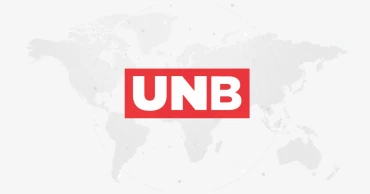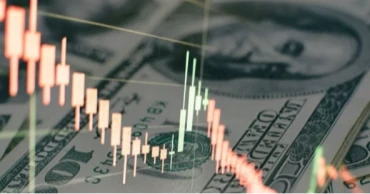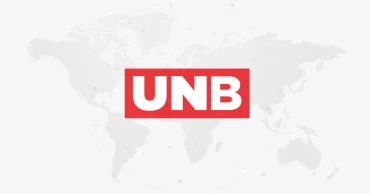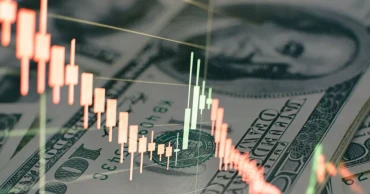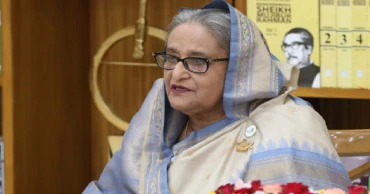Forex reserve
Despite relaxed conditions, Bangladesh couldn’t meet IMF’s forex reserves target in 2023
Despite relaxed conditions for net reserves by the International Monetary Fund (IMF), Bangladesh could not meet the foreign exchange reserves target at the end of 2023.
According to the IMF loan documents, the actual reserves were supposed to be USD $17.78 billion at the end of December 2023. However, as the year ended, the actual reserves stood at about $16.75 billion.
Not much difference between political parties' views on energy situation: CPD
Bangladesh Bank could not meet the reserves target as per IMF conditions by September-end as well. Later, the global lender reduced the reserves conservation target at the request of Bangladesh. Even the revised target could not be achieved by the end of December 2023.
According to IMF's new conditions, the real reserves are expected to be $19.26 billion in March and $20.10 billion in June 2024. However, financial sector stakeholders cannot determine whether this goal will be achieved.
The real reserve is the reserve that is calculated after excluding the SDR of the IMF, the dollars kept as foreign exchange clearing by the banks, and the dollars deposited for the Asian Clearing Union (ACU) bills.
Apart from this, there are two other accounts of reserve. One of them is total reserve. Another IMF accounting system is reserves maintained under BPM6.
At the end of the year 2023, total forex reserves increased to $27 billion. However, what the IMF considers is only net or real reserves.
Md Mezbaul Haque, spokesperson and executive director of Bangladesh Bank told UNB that the central bank worked to keep the reserves above $17 billion, as per the IMF-set target.
Former IMF economist Dr Ahsan H Mansur told UNB that it is unexpected that the IMF-set target could not be met even after reducing the previous target.
Habiganj-2: JaPa candidate withdraws from election citing 'lack of fair environment'
He also doubted that Bangladesh Bank will be able to maintain IMF’s foreign exchange reserves target in March 2024, if the central bank does not change its policies.
2 years ago
Bangladesh's useable forex reserves drop to $15.82 billion: Sources
Bangladesh’s foreign exchange reserves continued to fall with the usable reserves standing now at USD $ 15.82 billion as per IMF guideline, according to banking sources familiar with the development on Tuesday (November 28, 2023).
During the period of the COVID-19 pandemic two years ago, the reserves had soared to $48 billion, thanks to greater inflow of remittances amid reduced import demand. The reserves started decreasing since the eased import restrictions and impact of the Russia-Ukraine war.
Also read: Forex reserves below $20 billion after paying ACU
The latest foreign exchange report of Bangladesh Bank (BB) revealed that the country's reserves on 23 November stood at $19.52 billion based on the IMF formula (Balance of Payments and International Investment Position Manual) or BPM6.
As per the formula, the net reserves will be $3.7 billion less than the total reserve amount, the BB sources said.
The BB spokesperson Mezbaul Haque in this regard told UNB that foreign exchange from reserves is spent and deposited every day.
Also read: IMF relaxes forex reserve and revenue targets for $4.70 billion loan
It is a continuous process of a country, he said advising common people not to panic at the news of decreasing foreign exchange.
In July, Bangladesh started calculating its foreign reserves according to a formula suggested by the International Monetary Fund – BPM6.
Following the new calculation, Bangladesh's gross foreign exchange reserves that time dropped by $26.44bn to $23.56bn.
Also read: Bangladesh stands on the edge of deep ditch before the polls: Dr Debapriya
2 years ago
IMF relaxes forex reserve and revenue targets for $4.70 billion loan
The International Monetary Fund (IMF) has relaxed several targets including foreign exchange reserves, revenue collection, automatic price adjustment of fuel for the $4.70 billion loan package for Bangladesh.
At the beginning of this year, the IMF had set forex reserves target at $25.34 billion by September and $26.81 billion by June next year as conditions for the loan package.
According to BPM6 – reserve calculation method – Bangladesh’s forex reserves stand at $21.15 billion.
Bangladesh urged IMF to downsize required reserves to $20 billion for next loan instalment, says official
On a net basis, this amount has further decreased to below $18 billion.
In this situation, the Finance Division officials requested the IMF to relax the target for forex reserves.
Considering the request, the IMF has relaxed the target. Bangladesh has committed to keep the reserves at $18.4 billion at the end of December this year, and at $20 billion at the end of June next year.
IMF delegation meets BGMEA President to discuss challenges and prospects of RMG sector
Last Tuesday and Wednesday, the visiting IMF delegation discussed the issues with the relevant officials of the Finance Division of the Ministry of Finance.
Sources in the Finance Division said that after discussion, IMF agreed on being flexible on some conditions. Finance Secretary Md. Khairuzzaman Majumder led the meeting on behalf of the government. The IMF mission was led by Rahul Anand, head of the IMF’s Asia-Pacific division.
IMF team holds meeting with Power Division, discusses subsidy
2 years ago
Bangladesh’s forex reserves now $34.3 billion, as per IMF formula it’s $26.3 billion
Bangladesh’s foreign exchange reserves is falling due to meeting import demand of essential goods and a downward trend in remittance-export incomes, the latest data of Bangladesh Bank (BB) revealed.
After paying $1.35 billion to Asian Clearing Union (ACU) as an import bill for September-October, and $131 million spent to meet LC liabilities, the forex reserves stood at $34.3 billion at the end of November 7.
BB spokesperson Md Abul Kalam Azad told UNB that the liabilities of import payment are decreasing gradually after reining in opening of import LCs.
Read more: Forex reserves still enough to cover 5 months' imports: PM
US $1.35 billion in ACU bill has been paid in September-October. Earlier, Bangladesh had to pay $1.73 billion for July-August period and $1.96 billion during May-June, he said.
The central banks and the monetary authorities of Bangladesh, Bhutan, India, Iran, Maldives, Myanmar, Nepal, Pakistan and Sri Lanka are currently members of the ACU.
According to the suggestion of International Monetary Fund (IMF), if $8 billion used as export development fund is excluded from the foreign exchange reserves, then the reserves stand at $26.3 billion. It is the lowest in 7 years. Forex reserves were $35.8 billion on October 30, 2022.
Read more: None can chew up forex reserve, it’s for the people: PM Hasina
Bangladesh’s foreign exchange reserves reached an all-time high of $48.06 billion in August 2021 and a record low of $42.5 million in August 1974.
Despite curbing imports, the foreign exchange reserves are falling sharply.
Opening of new LCs has been reduced. But the liability of the previously opened LCs is now payable in terms of arrears or late payment. Due to this, the dollar crisis is becoming more acute.
Read more: What are the 3 reasons behind Bangladesh’s falling forex reserves?
Bangladesh will be able to meet the import expenses of three and a half months with the current forex reserves.
Regarding the tightening of imports, economists said that forex reserves cannot be increased by stopping imports. Domestic products need some imported materials. If not, the economy will be adversely affected.
Former BB governor Dr. Salehuddin Ahmed told UNB that declining reserves are a major challenge for the economy.
Read More: How to safely send remittance to Bangladesh?
“Now we have to think about how to meet this challenge. First, we need to emphasize increasing remittances. Dollar rates should be left to the market,” he said.
Banks in Bangladesh will buy dollars at the required rate. It does not matter whether it is Tk 112 or more. It is important to raise remittance now, former governor of Bangladesh Bank Dr. Salehuddin said.
3 years ago
None can chew up forex reserve, it’s for the people: PM Hasina
Prime Minister Sheikh Hasina today (October 27, 2022) said no one can chew up forex reserve.
“Many may wonder where the forex reserve money went. Money from forex reserve went to Payra Port, procuring food for the people, fertiliser, meeting the daily needs of people… No one can chew up that money. That is (forex reserve) for the people. We are using that for import and other necessary purposes,” she said.
Sheikh Hasina said this while inaugurating some development projects, including capital dredging at Payra Port, aiming to equip it with better facilities for smooth operations.
Read: What are the 3 reasons behind Bangladesh’s falling forex reserves?
The Prime Minister virtually inaugurated the development projects from her official residence Ganabhaban.
Other inaugurated projects included eight ships and vessels, the first terminal, construction of a six-lane approach road and a bridge at Payra Port.
The PM said that for the first time, money from Bangladesh Infrastructure Development Fund is being used. It is being used for capital dredging of Payra Port.
Read: IMF loan would help economy gain stability in reserves, dollar market: Experts
“We have provided loan, with minimum interest rate, to the port. With one percent service charge, they will have to give only two percent interest rate,” she said.
The Prime Minister also stressed that the country’s money will remain in Bangladesh. She said that Bangladesh’s forex reserve can be used for infrastructure development. In this connection, she mentioned the hassles Bangladesh has to deal with when taking foreign funds.
“Considering that, we have created a fund – Bangladesh Infrastructure Development Fund. We have created this fund using our forex reserve money. Using that fund, we are starting the dredging of Payra Port,” she said.
Read Payra Port has so far earned revenues worth over Tk 600cr: PM Hasina
Bangladesh’s forex reserves stood at USD 35.98 billion as of October 19, 2022, according to data from Bangladesh Bank. Forex reserves were USD 46.19 billion a year ago (October 19, 2021).
3 years ago
Forex reserve: Why $10 billion in 2010 was not a worry, but $40 billion today is
Economists have expressed concern just after Bangladesh’s foreign exchange reserves slipped below $40 billion, even though that should be capable of meeting three months import payments, based on imports for the immediate past fiscal.
Such concern was not seen 12 years ago, when Bangladesh’s forex reserves were only $10.60 billion in the FY2010 (2009-10 fiscal).
That is roughly the same level, since imports back then were also lower, at around $23 billion, meaning the reserve was enough to cover 4-5 months.
What is worrying now is a surge in imports driven by both demand for raw materials by export-oriented industries and growing consumption among the domestic consumers.
That, allied to an energy crisis caused by both domestic and international factors, is causing significant downward pressure on the forex reserve. Bangladeshis were used to hearing about the reserve rising gradually, reaching a peak of $48 billion a year ago.
But now, these two factors have combined to bring the reserve down quite rapidly below $40 billion, and it is likely even lower, given that exporters have started defaulting on dollar loans taken out of the Export Development Fund, which is funded out of the reserve.
Many economists now believe that foreign exchange reserves in Bangladesh have gone to dangerous levels.
Read: Forex reserves drop below $40 billion for the first time since 2020
They say, now that the reserves have fallen below $40 billion dollars, it is not possible to cover more than three months of import expenses.
Talking with UNB, Dr Debapriya Bhattacharya of CPD said how much in foreign exchange reserve is secure for a country depends on the price of energy and commodities in the global markets, dollars required in a month to meet import payments, and whether the demand for import will go up in the coming months or not.
Though the Bangladesh Bank (BB) is showing forex reserves near $40 billion, unencumbered reserves is actually around $31 or $32 billion after excluding dollar support to the export sector (the Export Development Fund is worth $7 billion), he said.
Dr Debapriya said the government is taking the right measures to face the situation, but it is not enough considering the global and domestic situation.
He suggested taking a loan of $1.5 or $2 billion from the IMF as a cautionary step to avert any worsening situation.
Debapriya also pointed out that the current situation (depreciation of taka) would create some opportunities to boost exports and encourage expatriates to send remittances.
But the overall macroeconomic stability has undoubtedly weakened. There is a danger of slowing down the ongoing development activities in the country.
However, the government does not consider the situation to be critical yet. To reduce the pressure on reserves, several cost-effective measures, including load shedding in the power sector, have been taken so that the cost of fuel imports can be kept under control.
The central bank is also dismissing economists' concerns about current forex reserves.
Md Serajul Islam, executive director and spokesperson of BB, said that if the reserves are enough meet the import expenses for three months, there is no danger.
"The reserves we have now will cover more than three months of import expenses. Now we have increased the import duty on all luxury goods. Hopefully, we will reap the benefits," he added.
Bangladesh’s import expenses grew to $80 billion in the immediate past fiscal, but even then, $40 billion should be enough to meet the Bangladesh Bank benchmark of 3 months, and possibly up to six months (half a year).
The inward remittance flow also slipped to $21 billion in FY 22 from $24.77 billion in FY 21.
The real concern stems from the fact that there are now issues beyond the government’s control at play. With gas reserves dwindling fast, Bangladesh has suddenly become highly dependent on energy imports, and their prices have been rising to record levels in the international market, with a pandemic-ending rally exacerbated by the war in Ukraine.
Bangladesh was forced to sit out two rounds of purchasing LNG on the international market recently due to exceptionally high price, and that directly led to the country’s energy crisis, as production of gas from the country’s own gasfields is nowhere near enough these days to meet demand. That led to the return of load shedding.
There is also the issue of export income not being fully repatriated to the country. Besides, the garment sector also imports 60 percent of its export volume.
In the face of all this, the government’s steps to cut imports of luxury goods is also a step in the right direction. But whether they will be enough, only time will tell.
3 years ago
Forex reserves drop below $40 billion for the first time since 2020
Bangladesh’s foreign exchange reserves on Tuesday declined to USD $39.77 billion or below 40 billion mark for the first time in two years, according to updated data of the central bank.
The drop has been attributed to Bangladesh Bank’s import payments of $1.99 billion last week to the Asian Clearing Union (ACU).
Bangladesh, Bhutan, India, Iran, the Maldives, Myanmar, Nepal, Pakistan and Sri Lanka are members of ACU. The central banks of these countries have to make the payments every two months.
Read: BB tightens belt on forex reserve, bans import credit on luxury items
The reserves have been under stress for the past couple of months due to surge in the import bills and drop in the inward remittance.
Bangladesh’s foreign exchange reserves soared to record amount of $46.15 billion in December last year.
Bangladesh’s forex reserves witnessed a fall as import volume in the fiscal year 2021-22 increased to about $78 billion, while foreign exchange gained from remittance and export stood at $73 billion. The export earnings in FY 22 amounted to 52.08 billion and inward remittances $21.03 billion.
Read Fuel, forex reserves may run out after power crisis: Fakhrul
The inward remittance shows a fall in the FY22 to $21.03 billion from $ 24.77 billion in the FY 21.
Md. Serajul Islam, executive director and spokesperson of BB told UNB that the central bank is selling US dollar to meet huge import payments in every day.
He said fall in inward remittance and rising demand of imports are the reasons for the fall in the foreign exchange reserves.
Read Amid volatile forex market, BB devalues currency by Tk1.60
3 years ago
BB tightens belt on forex reserve, bans import credit on luxury items
The central bank has tightened spending on the foreign exchange reserve to judiciously meet the cost of importing essential commodities and fuel.
As part of this move, Bangladesh Bank has imposed restrictions on loans for importing 27 types of goods, reducing import demand which has increased by 44 per cent in recent months.
Read:BB asks banks to keep branches open in Dhaka cattle market areas on July 8,9
From now on, importers will not get bank loans for importing these products. Banks will not be allowed to use forex if the loan LCs was approved earlier.
The central bank directive stated that long-term negative effects of the corona and the recent prolongation of the war of Russia-Ukraine leads to instability in the global economy. To further consolidate the country's currency and debt management, the BB has directed to re-determine the cash margin rate in the case of opening of import bonds.
The directive stated that motorcars (sedans, SUVs, MPVs, etc.), electrical and electronics home appliances, gold and gold ornaments, precious metals and pearls, readymade garments, leather goods, jute goods, cosmetics, furniture and ornaments, fruits and flowers, - Certificate in respect of opening of securities for import of cereals (such as non-food items, processed foods and beverages, such as canned food, chocolate, biscuits, juices, soft drinks, etc.), alcoholic beverages, tobacco, tobacco products and other luxury goods, banks will have to maintain 100 per cent cash margin provision opening import LCs for these goods.
The required margin has to be deposited from the importers’ own source against the opening of import LCs for these products. No margin can be paid in favor of the importer in the concerned bank against the opening of the import loan by opening an existing loan account or by creating a new loan account.
In addition to baby food, essential food products, energy, life-saving medicines and equipment recognized by the Directorate of Health, medical equipment, directly imported capital equipment and raw materials for manufacturing local industries and export oriented industries, agricultural products and other government priority projects, minimum of 75 per cent cash margin should be maintained in case of opening import credit for all products.
Read: BB re-fixes mobile financial service money transaction limit
Dr Salehuddin Ahmed, former governor of BB told UNB that the central government has taken the right decision in discouraging such imports.
“The global economy is going into a volatile situation due to the prolonged Russia-Ukraine war and it is uncertain when the situation would improve,” he said.
So the crunch of forex spending is now important to avert any financial crisis, Salehuddin said.
3 years ago
Bangladesh’s forex reserves cross $44 bn thanks to better inflow
Bangladesh’s forex reserves rose to USD $ 44.30 billion again after a month, thanks to growing inward remittance.
The forex reserve fell to $43.89 billion on March 6, 2022 after paying import bills of $2.16 billion to Asian Clearing Union (ACU). It was the lowest forex reserves for Bangladesh in past one year.
The remittance inflows of $15.30 billion in nine months of the current (July-March) fiscal year (FY), pushed the foreign currency reserves to 44.30 billion on Sunday in contrast to a month ago.
Bangladesh Bank (BB) sources said with the reserves, it will be possible to meet the import costs over five months. But even six months ago, Bangladesh Bank had reserves to meet the import cost of 10 months.
Also read: Bangladesh’s forex reserve expected to thrive on increased remittance inflow
However, the inflow of remittance is still in negative growth in the first nine months (July-March) of the current 2021-22 fiscal year. In these nine months, the expatriates have sent $15.30 billion remittance. During the same period of the last fiscal year 2020-21, the expatriates sent $ 18.59 billion remittance.
It shows that the inflow of inward remittance has decreased by 18 per cent in 9 months despite remittance inflow increase by 24.45 per cent in March compared to February.
Md. Serajul Islam, executive director and spokesperson of BB told UNB that remittance inflow in the banking channel is increasing gradually after raising the cash incentive to 2.5 per cent.
The expatriates are taking Tk 102.5 by sending Tk 100 remittance in the hassles-free legal channel, he said.
Serajul hinted that the remittance inflow would increase in April for Ramadhan and Eid as the expatriates usually send more money to their relatives in the country during the festival.
The inward remittance inflow of the last nine months of FY22 saw a decreasing trend compared with the similar months in the FY21.
Also read: No decision yet to lend private sector from forex reserves: Finance Minister
Bangladesh received remittance $1.87 million in July, $1810.10 million in August, $1726.71 million in September, $1646.87 million in October and $1553.70 million in November, $1630.66 million in December, $1704.53 million in January, $1149.08 million in February and $1859.97 million in March of FY22.
In the same period of FY21, the remittance inflow was $2598.21million in July, $ 1963.94 million in August, $ 2151.05 million in September, $ 2102.16 million in October, $2078.74 million in November, $2050.65 million in December, $ 1961.91 million in January, $1780.59 million in February and $1910.98 million in March.
3 years ago
Bangladesh’s forex reserve expected to thrive on increased remittance inflow
Bangladeshis working abroad are expected to send huge money back home over the next three fiscal years helping the country’s foreign currency reserve to hit USD 53.99 billion by the middle of 2023-24 fiscal year.
The government projects over a 12 percent increase on average in the inflow of remittance, the key driver of the country’s more than $409 billion economy, over the next three fiscal years, including the current one.
According to a Finance Ministry document obtained by UNB, the remittance inflow of 2019-20, 2020-21 and 2021-22 was 11.2 percent and 36 percent while the target for the current 2021-22 fiscal is 15 percent with a projection of 12 percent and 10 percent for 2022-23 and 2023-24 fiscals respectively.
Read:Bangladesh Bank allows receiving remittances through OPGSPs
The document reveals that the foreign exchange reserve was USD 36.04 billion and USD 44 billion in 2019-20 fiscal and 2020-21 fiscal respectively while the target for the current 2021-22 fiscal is USD 48.37 billion with projection of having USD 50.74 billion and USD 53.99 billion for 2022-23 fiscal and 2023-24 fiscal respectively.
For a developing and emerging economy, the role of foreign remittances has always been crucial. In the context of Bangladesh, foreign remittances are expected to help reduce the current account deficit and augment GDP growth by stimulating domestic demands, the document says.
On the other hand, it says, the micro-level context shows that remittance inflows affect the lifestyle of the household as well as increase the saving level that can serve as an important source of capital.
The document mentions that the government has taken several initiatives to increase remittance inflows as well as foreign employment.
The initiatives include providing cash incentives for sending remittances through banking channels, simplification of remittance-related rules and regulations, reduction in administrative costs for sending remittances through financial institutions and exploration of new market sources for manpower export.
The official remittance inflows began going up in the 2020-21 fiscal despite global and domestic impacts of the Covid-19 pandemic. The total inflow of foreign remittances during the 2020-21 fiscal was $24.77 billion which is 36 percent higher than the same period of the previous fiscal year.
According to the document, the current account deficit widened in the 2019-20 fiscal due to weak exports before moving into surplus in the 2020-21 fiscal, supported by a surge in official remittance inflows.
4 years ago
